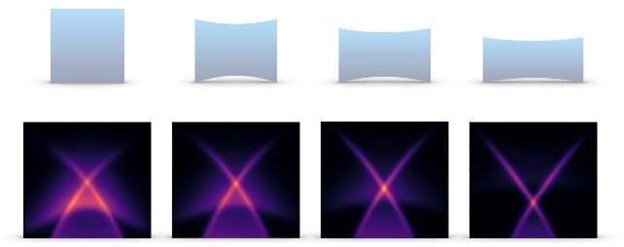Researchers Investigate Intricacies in Superconductors with Hopes to Support Quantum Computer Development
 Ryan Day studies superconductors. Materials that conduct electricity perfectly, losing no energy to heat and resistance. Specifically, the University of California, Berkeley scientist studies how superconductors can coexist with their opposites; insulating materials that stop the flow of electrons. The materials that combine these two opposed states, called topological superconductors, are understandably weird, hard to characterize and engineer, but if one could design them properly, they could play an important role in quantum computing.
Ryan Day studies superconductors. Materials that conduct electricity perfectly, losing no energy to heat and resistance. Specifically, the University of California, Berkeley scientist studies how superconductors can coexist with their opposites; insulating materials that stop the flow of electrons. The materials that combine these two opposed states, called topological superconductors, are understandably weird, hard to characterize and engineer, but if one could design them properly, they could play an important role in quantum computing.
"Every computer is prone to error, and that is no different when you move to quantum computing— it just gets a lot harder to manage. Topological quantum computing is one of the platforms thought to be able to circumvent many of the most common sources of error," says Day, "but topological quantum computing requires that we fabricate a particle which has never been seen before in nature."
Day came to the Canadian Light Source at the University of Saskatchewan to use the QMSC beamline, a facility built to explore exactly these types of questions in quantum materials. The capabilities were developed under the leadership of Andrea Damascelli, Scientific Director of the Stewart Blusson Quantum Matter Institute at UBC, with whom Day was a doctoral student at the time of this research.
"QMSC was developed to have very fine control over a very wide range of energies, so you can really get exceptionally precise information about the electrons as they move in all possible directions," said Day.
His experiment, performed at temperatures around 20 degrees above absolute zero, aimed to resolve conflicting results in the existing research on superconductors with topological states.
"The experiments that had been done before ours were really good, but there were some contradictions in the literature that needed to be understood better," he explained. The relative newness of the field, combined with the unusual properties that materials display in the energy ranges used for this research, meant it was difficult to disentangle what was going on with the topological states.
In his experiments, Day observed that the topological states were embedded in a large number of other electronic states which inhibit lithium iron arsenide—the superconducting material he's studying—from exhibiting topological superconductivity. Based on his measurements at the CLS, he has proposed that this problem can be circumvented by simply stretching the material.
The results of this work, published in Physical Review B, provide further evidence that lithium iron arsenide does support topological states on its surface, key to potentially using the material in quantum computing. It also reveals potential challenges to engineering materials for these applications, an area for future research.
"By doing these experiments, we can understand this material in a much better way and begin to think about how we can actually make use of it, and then hopefully someone builds a quantum computer with it and everyone wins."
More information: R. P. Day et al, Three-dimensional electronic structure of LiFeAs, Physical Review B (2022). DOI: 10.1103/PhysRevB.105.155142
Journal information: Physical Review B
Provided by Canadian Light Source
Image Credit: Canadian Light Source



